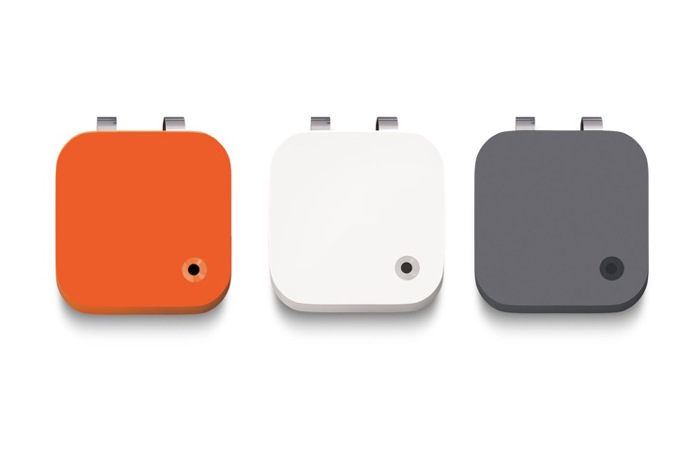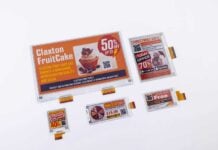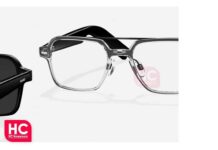Lifelogging cameras enable you to document your life and to capture ordinary day-to-day situations as well as special moments in pictures. How does it feel for oneself or for the people around you and what could become of this still young technology? A self-experiment and an interview with Oscar Kalmaru, the CMO of Narrative.
Narrative Clip is a lifelogging camera worn on your T-shirt, blouse or jacket that takes a picture of your surroundings every 30 seconds. Equipped with a 5 megapixel camera, a GPS and a compass, the Narrative collects contextual information for each shot such as location and cardinal directions, in order to make it easier to sort and view the pictures. This generates a personal lifelog of the places you visit, the people you meet and the situations you experience. In practice this works quite simply – the clip, which is about the size of an iPod nano, can be comfortably and inconspicuously attached to your clothing. To pause the lifelog, you can simply put the clip in your pocket or face it with the lens down.
The pictures are transferred by connecting the Narrative Clip to a Mac or PC via a micro USB cable. The pictures are then transferred from the lifelogging camera to the computer and from there are uploaded to Narrative´s server. There, the pictures are sorted by quality and by setting. They can then be viewed on a smartphone app, which composes the pictures into so-called “moments” and where blurry, dark or otherwise qualitatively inferior pictures can be automatically rejected if desired. The pictures’ detour through the computer and Narrative´s server also has its technical reasons. Due to the sheer amount of data, a direct transfer to smartphones would be impracticable and even most computers cannot cope with the flood of pictures. With up to two gigabytes data each day and several terabytes a year, most users would soon be overwhelmed by saving and backing up their photos. Furthermore, Narrative is planning an online profile and an API in addition to the app that would allow integrating the recorded moments into other web-based applications.

After testing the lifelogging camera myself for a few days, I got the chance to talk to Oskar Kalmaru, Narrative´s Chief Marketing Officer, about the young start-up, his product, and his expectations of how the market will develop. During the interview, Kalmaru told me about the goal of Narrative, being a pioneer of user-friendly lifelogging cameras, to „provide each person with a photographic memory“. The company takes issues such as privacy very seriously – thus the Narrative Clip is intentionally designed to consider the different interests of users and their surroundings. Thanks to the clip, it is easy to remove the camera so as not to, for example, photograph passengers sitting across from you for hours on end during a long train ride. However, if you informed your friends and others about the camera, you mostly received positive responses. Due to the spread of mobile phone cameras, many people are accustomed to pictures constantly being taken – therefore, Kalmaru says he experiences disapproving or fearful reactions rather infrequently.
According to Kalmaru, how the lifelogging camera can be applied varies for each user. He himself uses the camera rather selectively to capture special moments e.g. with his family. He also sees possible applicability for self-tracking projects such as in the case of an artist, who uses the camera to record the creative process of her work. But the photographic memory is not only interesting for private individuals; the company has also received many inquiries from the areas of security and market research. For the future, Kalmaru sees many possibilities to enrich the photographic lifelog with additional contextual information. For example, pictures recorded by different users at events such as concerts could be shared among one another. Also, it might be possible to compile 360° views out of multiple shots taken by different users. For the young market segment, Kalmaru foresees a large growth potential. First, it’s a question of „fostering a cultural familiarization, as previously with mobile phones“, with using wearable cameras. In the intermediate future, photographic memory could play an important role in conjunction with a multitude of other self-tracking inputs.
 My own trial with the Narrative Clip delivered similar insights as those described by Kalmaru. Whereas I initially felt a bit presumptuous for using the lifelogging camera during daily activities such as shopping or commuting, I soon noticed that the device was hardly noticed by the people around me and did not provoke any negative responses during fleeting encounters. When I met and told my friends, family and business partners about the functions of the Clip, they also had no reservations in becoming part of my lifelog. In the future, after these experiences, I plan to use the camera more selectively, in particular on vacations and at other special occasions. The lifelog this generates could help me preserve the wonderful moments in life and at the same time enjoy them to the fullest – since I would no longer have to worry about shooting memorable pictures myself.
My own trial with the Narrative Clip delivered similar insights as those described by Kalmaru. Whereas I initially felt a bit presumptuous for using the lifelogging camera during daily activities such as shopping or commuting, I soon noticed that the device was hardly noticed by the people around me and did not provoke any negative responses during fleeting encounters. When I met and told my friends, family and business partners about the functions of the Clip, they also had no reservations in becoming part of my lifelog. In the future, after these experiences, I plan to use the camera more selectively, in particular on vacations and at other special occasions. The lifelog this generates could help me preserve the wonderful moments in life and at the same time enjoy them to the fullest – since I would no longer have to worry about shooting memorable pictures myself.
The quality of the pictures taken in principle varies considerably and depends greatly on whether you are currently moving or on the distance between the motive and the camera. If you turn on the filter, the app browses and sorts out around 60-70% of the pictures and even then those remaining cannot keep up with the quality of a manually shot picture. The appeal of the pictures taken by the Narrative camera lies more in the coincidence, the introspection and the scurrility one can often discover in the situation or in the perspectives. When glancing through the pictures, they are ideal to reflect on your activities and at a closer look they can reveal all sorts of interesting photographic results. For lifelogging pioneers, the Narrative Clip is available now for $279. This price includes one year of using the cloud-based services for picture management, which incurs a fee of $108 after the first year.
Images: Narrative



















